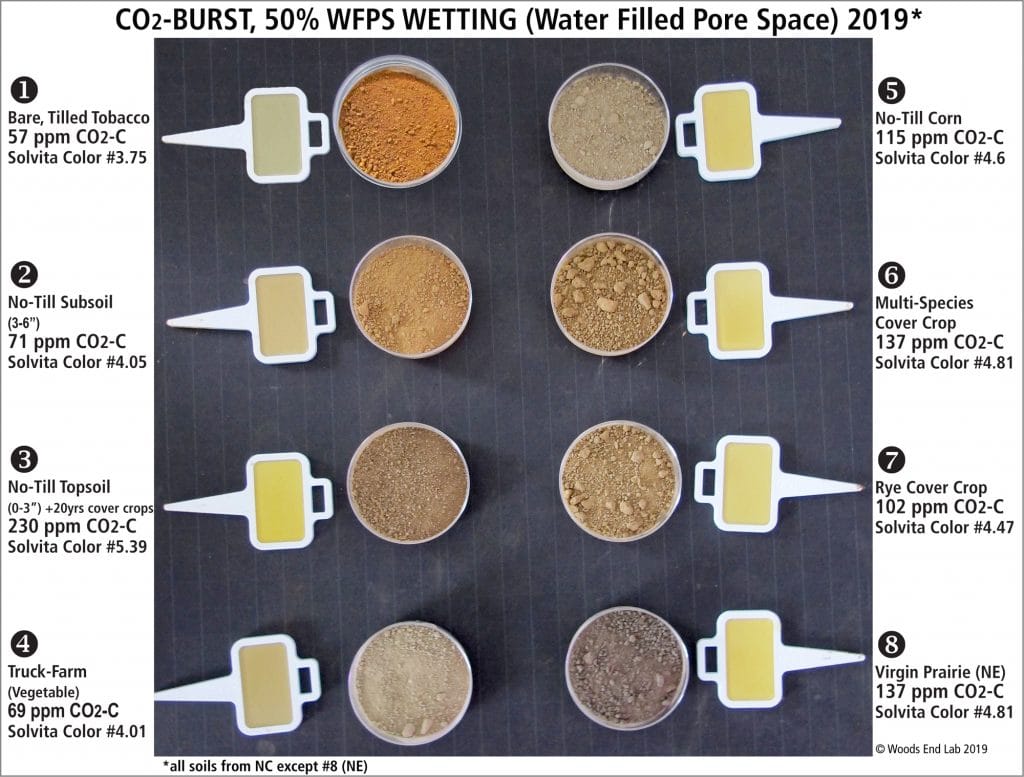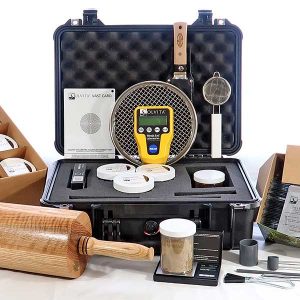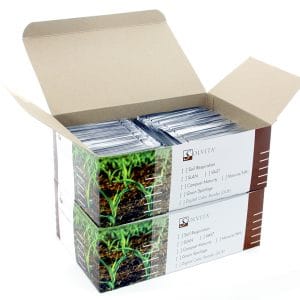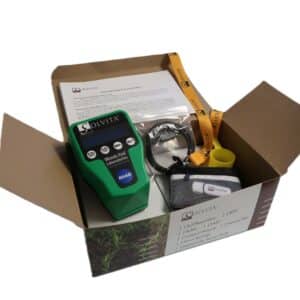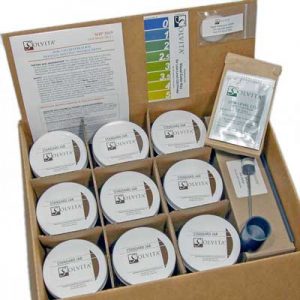CO2-Burst
Measure CO2 Respiration
Standard Lab Protocol:
Measuring CO2 Respiration –
an Indicator of Soil Health
CO2 Method – Standard Lab Protocol
Measure CO2 Respiration
provides the means for commercial laboratories to easily and efficiently measure CO2 respiration from dried, sieved soil once rewetted. The procedure includes a specified wetting method to adjust soils close to 50% of available pore-space with water, avoiding the artifact of over-wetting. The updated (2019) protocol contains vetted protocols to assure CO2 is within a normal 0-3% range for which Solvita has validated, linear response.
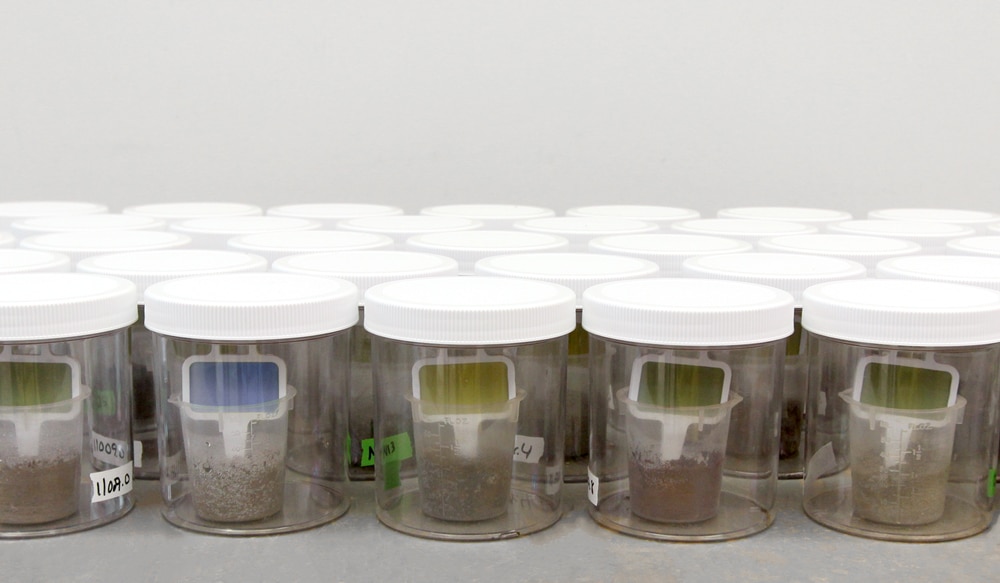
Measuring CO2 Respiration Method – Standard Lab Protocol
provides the means for commercial laboratories to easily and efficiently measure CO2 respiration from dried, sieved soil once rewetted. The procedure includes a specified wetting method to adjust soils close to 50% of available pore-space with water, avoiding the artifact of over-wetting. The updated (2019) protocol contains vetted protocols to assure CO2 is within a normal 0 – 3% range for which Solvita has validated, linear response. Measuring soil CO2 respiration has never been easier than with Solvita, and the accuracy of Solvita when used according to procedure rivals all competing methods.
What is it?
The test indicates a biological response to an event. It requires dried samples of soil that are moistened with sufficient water to trigger a rapid release of carbon dioxide as a result of the disturbance effect. The modest to strong flush of carbon dioxide is due to microbes rapidly assimilating freshly moistened soil organic matter. This “burst” of activity is believed to result from accumulated osmolytes plus the interaction effect of disturbance due to processing soil. The quantity of CO2 release is used to infer the soil’s maximal biological activity which is believed related to “soil health” even though it may also represent a severe, temporary degradation function, comparable to severe-field tillage at the farm scale. The latter effect is particularly the case if soils are processed by high-speed hammermills as is common in nutrient laboratories. Woods End Labs is unique in exploring additional techniques to distinguish the “damage” part of the response (caused by the processing severity) from the “soil health” part, the natural response of bacteria to life-supporting water. If successful, a new test will emerge that segments the damaging influence of excessive soil tillage.
How is it measured?
For the quantity of CO2 released by microbes after soil wetting Solvita employs a means of observation that is in one of the most innovative and intriguing forms of chemistry ever invented: thin-layer gel chromatography. The response is intentionally designed to be “slow chemistry” as the accumulation of CO2 within the gel matches the micro-molar slow production rate by microbes. The response is designed to be observed both visually and quantitatively by keying via Beer-Lambert Law response of the gel to rising CO2 levels in the jar. The overall reaction is readily quantified by a 3-color digital array device called the also invented by the Woods End team. This reading is performed nomically after 24 hours, the time it takes for CO2 in the jar headspace to rise from 0.04% to about 3%, the saturation point of the reaction. While some scientists argue for a longer read time, there is little evidence supporting that long wait times (and high CO2 in jars) will prove advantageous. Brinton’s team developed the method after employing 7-day respiration for 2 decades and find distinct advantages to short read times: 1) the majority of the natural CO2 burst is captured in the first 24-hrs, there is not excessive levels of CO2 in the jar space, and 2) negative CO2-buildup feedback does not happen. Modern competing methods with KOH are advocating 3-4 days as a prerequisite for CO2 testing, but this is only because these methods, unlike Solvita, are extremely insensitive to short-term measurements. Solvita is happy to provide comparative literature
Why measure CO2 respiration?
- CO2 respiration as an indicator of soil health – The quantity of CO2 release over a specific period is generally regarded as an accurate indicator of biological attributes favoring healthy soil functioning. Depleted soils tend to have very low CO2 emissions. The “turnover rate” of CO2 increases with improved management practices including cover cropping and organic amendments.
- CO2 respiration as an indicator of nutrient release – Measuring the rate of carbon exchange via soil respiration is indirectly linked to nutrient “mineralization” – the potential release of nutrients such as nitrogen and phosphorus that are components of plant residues, microbes and humus. The accuracy of the measurement depends on related factors such as C:N.
- CO2 respiration as an indicator of carbon sequestration – The inverse of respiration is sequestration: what is not released as CO2. How this works is that the quantity of CO2 actually released per soil organic is only a fraction of what is stored: therefore the greater the release of CO2 the greater the reservoir in the soil is.
How soil and plants interact
Soil and plants interact. Soil provides the environment for plant growth while plants participate in building and sustaining soils by releasing exudates during life and leaving residues behind for bacterial food. This dynamic cycle is best described as the soil-plant-biology system. In the process, some carbon is sequestered as “humus” and some released as carbon dioxide (CO2) due to microbes eating. The relationship between these processes is the bedrock of lasting soil fertility. Declining rates of CO2 respiration are principally associated with the absence of sufficient plant cover to sustain soil life, and this is a result of modern farming practices. As soil quality declines, microbes food supply diminishes and the rate of CO2 respiration declines.
Why is CO2 respiration important?
Soil CO2 respiration has been known to be an indicator of soil quality since as early as the 1920’s. Research in Europe after the 50’s helped standardize lab analytical procedures even before the practical application was understood. By the 1970’s soil respiration tests were seen as useful indices to compare results of different soil management strategies. Unfortunately, it was not until more recently – with the widespread use of Solvita worldwise- that CO2 respiration was more broadly recognized to be a crucial trait linking microbial activity to healthy soil,- a complete cycle based on overall soil biota. No other test can claim this universality. In the not-too-distant future soil respiration results will provide a useful key to leveraging natural fertility to save significantly on nitrogen fertilizer dollars and help bolster farming’s environmental commitment.
